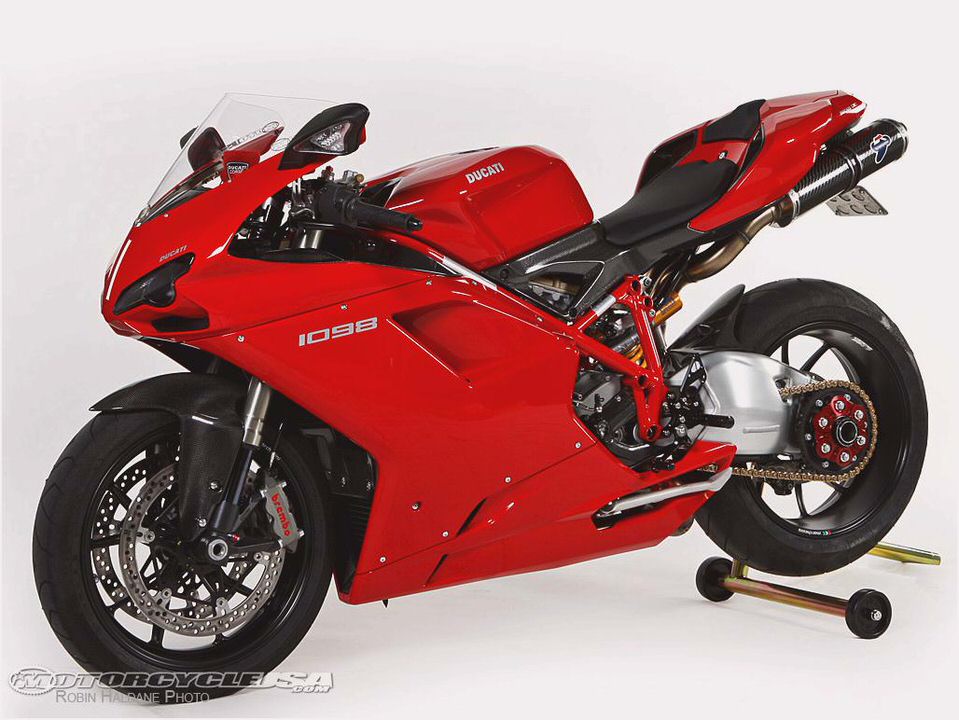
2007 Ducati 1098: V-Twin Performance Without Peer
The Ducati 1098 gets Showa shocks front and
rear, and is priced from $25,995 in Australia
Ducati 1098 S
The Ducati 1098 S is lighter, faster, and $5,000 more expensive than the 1098 model, but if you believe Ducati it’s worth every penny. What do you get over the standard $26,000 1098? Top shelf suspension in the form of fully adjustable 43mm Öhlins FG511 forks at the front and a fully adjustable Öhlins 46PRC rear shock with a ride enhancing top-out spring.
There’s also an fully-adjustable steering damper.
The Ducati 1098 S is also lighter thanks to higher quality tyres, brakes, wheels, and a carbon fibre front fender. The Marchesini forged and machined wheels alone reduce weight by 1.9kg (4lbs), and the ‘S’ model also gets a red pin-stripe around the front and rear wheel rims.
Fully adjustable forks, a Sachs steering damper
and a digital instrument display vie for attention
The Ducati motorbike brand could be considered the Ferrari of the motorcycle world – an Italian brand that does things differently, and with a Mediterranean flair that’s hard to ignore.
Its latest sports bike, simply called the Ducati 1098, is its range topping model and as the name suggests has a 1.1-litre V-twin engine.
Think of it as the Ferrari Enzo of the two-wheeled world – it’s got more power and better handling than any other model (except the Ducati 1098 ‘S’ model) and has a design that drips with stylish aggression.
Priced at $25,995 for the Ducati 1098 and $30,995 for the Ducati 1098 S, there are varying waiting list lengths for the new bike in Australia, some of which stretch out beyond six months. Demand for the new model is high, and it’s easy to see why.
According to Ducati, the priority in every step of the 1098 development has been performance first. Every system, every detail and every component has been studied and pared down to its essence and performance increased to the maximum. If it didn’t make the 1098 lighter, faster or deliver quicker lap times, it wasn’t considered, reads the Ducati statement.
Built in Borgo Panigale near Bologna in Italy, the new bike cranks out 118kW (160hp) and 122Nm of torque, which makes the 1098 the most powerful twin-cylinder motorcycle in the world with the highest torque-to-weight ratio of any sport bike.
Bang on a more rigid frame, improved aerodynamics, and uprated brakes and the 1098 is the lightest, fastest stopping, quickest lapping Ducati in history, says the Italian sports bike company.
Design
The design moves away from the bombastic look of the Ducati 999 – its predecessor – and has more in common with the design cues of the 916 and 996 models of the mid ’90s and early ’00s – and once again features the single-sided swingarm.
Where the 999 had a centrally mounted headlight array, the new model features a more traditional pair of horizontally aligned headlights, underneath which sit a pair of air ducts.
The overall design is fairly simple in execution, yet it conveys the exotic nature of the 1098 exceptionally clearly.
But it wasn’t just pure design that dictated the final look of the bike, as Ducati outlined in a statement: Great care has been taken in the design of the air supply ducts so to ensure efficient air-flow through radiator and oil coolers as well as provide ample air delivery to the airbox feeding the powerful new Testastretta Evoluzione engine.
Moulded in lightweight ‘Terblend’, the bodywork’s form becomes a considerable contributing factor to the overall performance of the machine by helping reduce weight even further while allowing the rider to effortlessly ‘tuck in’ from the wind stream and turbulence to achieve maximum straight-line track speed, says Ducati.
The overall design theme came about through by melding race track technology, track-derived components and Ducati heritage, and the Italian bike maker stated that the changeability of most of the 1098’s components means that the sports bike can quickly be transformed into a real race bike.
As well as the new design, a new engine, and tonnes of other new bits and pieces, Ducati has revealed that there are other significant ‘firsts’ for the company:
First production motorcycle to have the massive stopping power of Brembo Monobloc brakes.
First bike to have a data acquisition system integrated as standard equipment.
First to use an ingenious construction method for its weight-saving single-sided swingarm.
The new 2007 Ducati 1098 sports bike features another first for a road-going Ducati in that it includes the direct application of MotoGP technology, like the power producing GP6-derived elliptical throttle bodies and the use of the information-rich instrumentation originally developed for the new Desmosedici GP7, explains the Italian motorcycle builder.
V-Twin Engine
Being a 90 V-twin the Ducati 1098 emits a ‘throaty’ roar from its twin exhaust cans that sit underneath the seat, and the new engine has been dubbed ‘Testastretta Evoluzione’. It represents Ducati’s latest evolution of the L-Twin engine which it claims is the most powerful twin-cylinder production engine in history.
Fighting words to be sure, but 160 horsepower (118kW) is a huge amount for a V-twin engine, which don’t rev quite as freely as similarly sized inline 4-cylinder motorbike engines and therefore don’t have the high rev ceilings and power levels to match. But torque is another question, and the new Ducati has plenty of that: a whopping 122Nm at the crankshaft!
The 1098 capacity is a result of a significant increase in the bore and stroke of the Evoluzione motor [from 999cc]. Highly ‘over-square’, it now sports a big 104mm bore and a relatively short 64.7mm stroke. To optimise the benefits of the new, big Ducati Twin, the cylinder heads have been completely redesigned and, when combined with advanced MotoGP induction technology, enable even the standard specification 1098 to produce more power than the previous extreme Testastretta ‘R engine, Ducati outlined in a statement.
Ducati’s 1098 gets a pair of very shiny new cylinder heads thanks to their magnesium covers, and they feature fewer components that help reduce a weight-saving of more than 3kg (6.5+lbs).
After optimising the Evoluzione cylinder heads, explains Ducati, engineers then focussed upon releasing the potential of the new design by feeding them with MotoGP-derived elliptical throttle bodies. With a 30% increase in air flow over conventional throttle bodies, the new elliptical shape contributes an incredible 5hp increase to the record-breaking motor.
The Testastretta Evoluzione is the lightest Ducati Superbike engine ever, thanks to close scrutiny of every engine component. A total of 5kg (11.1lbs) has been saved by reducing the weight of many components, including transmission gears and the gear selector drum as well as the oil pump and primary gears, Ducati explained in its statement.
At the tail end of the new 1.1-litre 2-cylinder engine is a new exhaust system that – like almost everything else on the new bike, is much lighter than the previous models’. Ducati says that the symmetrical two into one into two (2-1-2) exhaust pipe layout is a power-increasing design, that it uses 52mm-57mm diameter tubing with wall thicknesses reduced by 30% to 0.8mm (0.030in).
Chassis
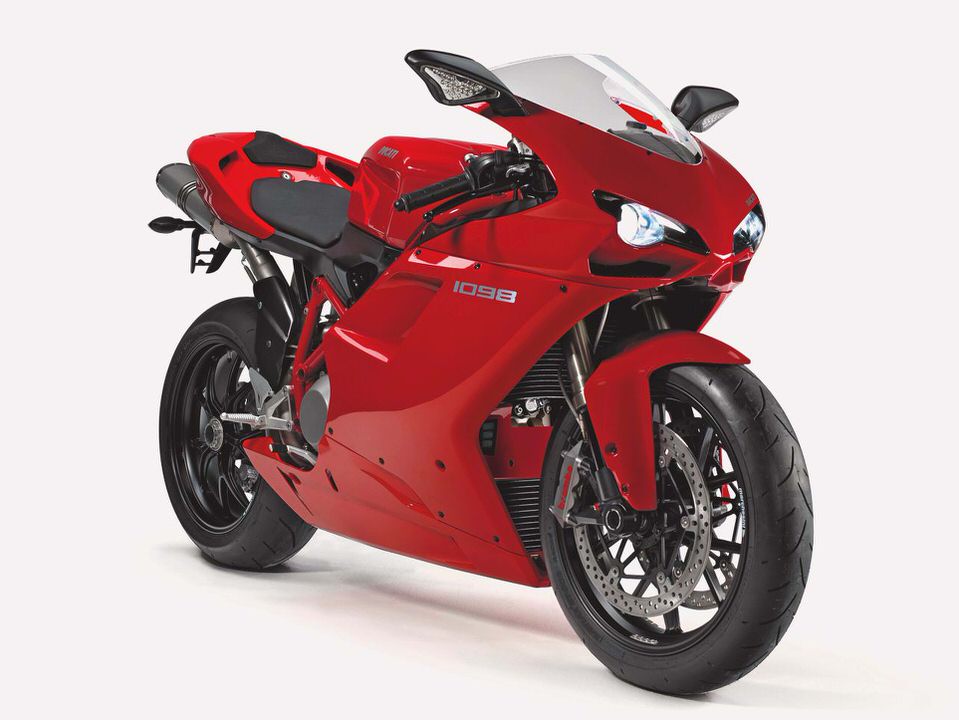
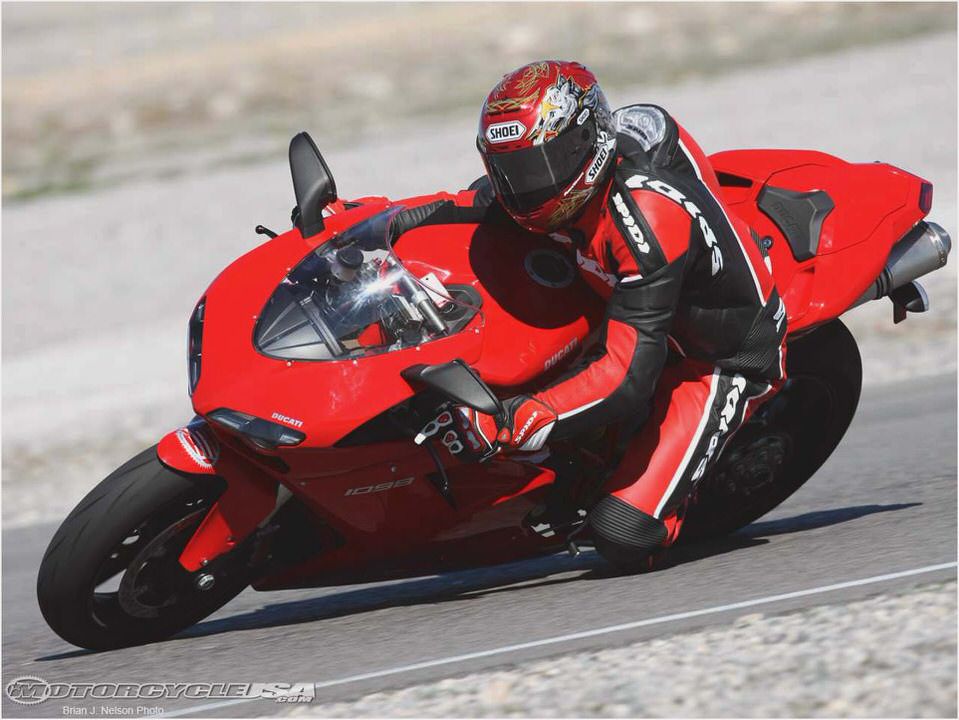
In addition to the completely revised engine, Ducati 1098 gets a new chassis as well, and though trellis frame is still the backbone of the bike, this time it’s both stiffer and lighter. This was achieved by increasing the tube diametre from 28mm to 34mm, but reducing the thickness of the tube walls from 2mm to 1.5mm, which results in an increase in rigidity by 14% and a weight saving of 1.5kg (3.3lbs).
A new single-sided swingarm is also part of the 1098s repetoire, which is stronger than its predecessor’s – and more beautiful argues Ducati. The rear suspension that keeps the swing arm working and the rear wheel in contact with the road is a fully adjustable Showa single shock for the 1098 while the more expensive (but lighter and faster) 1098 S model gets an Öhlins damping unit. Ducati says that one of the most important things it wanted for the 1098 model is for an adjustable rear ride height which is independent of spring pre-load and other suspension settings, which are vital when tuning the chassis for track day and official racing duties.
At the front end the big Italian sports bike gets fully adjustable 43mm Showa forks with special low friction Titanium Oxide-treated sliders on the 1098 model, and what it calls spectacular 43mm Öhlins forks that come with low friction Titanium Nitride sliders on the 1098 S (and both the standard and S models get radial Monobloc caliper mountings). A Sachs steering damper is also part of the front suspension system, to reduce tank-slappers when the front wheel begins to lift off the ground.
Ducati chose what is arguably the world’s best brake caliper maker, Brembo, to ensure strong deceleration, fitted with twin 330mm front discs.
The 1098 is the first production street bike to use Brembo’s Monobloc caliper racing technology. The M4 caliper uses four 34mm pistons and two large surface pads for maximum stopping power, explained Ducati, stressing that these calipers are different from most in that they are machined from a single piece of alloy, instead of the bolt-together construction of conventional calipers. This ensure greater longevity, resistance to distortion, and a more progressive brake lever feel for the rider.
The final pieces of the Ducati 1098’s chassis come together with the wheels, which are supplied by Marchesini, known for their light-weight construction. The 1098 and 1098 S both get Marchesini Y-shaped wheels, but the ‘S’ model gets the truly exotic wheels made from machine finished forged-aluminium, and both bikes get 190/55 rear tyres, which are the widest ever fitted to a Ducati.
Electronics Instrumentation
Instead of the traditional motorbike instrument setup, where toggle buttons are found next to the rev counter or speedo dial, the Ducati 1098 features a minimalist Desmosedici-style digital instrument display which is managed by handlebar-mounted switch gear, which allows riders to scroll through and select from various menus without taking their hands off the handlebars.
The blue-backlit read-out presents revs-per-minute and speed, with the former displayed across the screen in a progressive bar graph, but as Ducati explains the digital system is customisable so that the rpm and speed can be displayed in numeric values as well. There’s even a useful system that can be easily activated for track duty, displaying data such as lap times (which are recorded by hitting the high-beam flash button as a stopwatch).
Better yet, Ducati also offer 1098 buyers with the option of purchasing the Ducati Data Analyser (DDA), which allows users to plug the bike indirectly into a PC (what about Mac users?). The DDA system is standard equipment on the 1098 S, and via a special USB stick they can download numerous channels of data including:
Throttle opening
Vehicle speed
Engine rpm
Engine temperature
Distance travelled
Laps
Lap times
It sounds like a very useful system, particularly for privateer racers and riders who simply want to track their personal riding style. Ducati says the system automatically calculates engine rpm and vehicle speed data so as to also display gear selection as an additional channel of information and then at the end of a ride or track session, up to 2Mb (approximately 3.5 hours) of information can be downloaded to your computer.
This information can then be viewed in detail, compared against other data and can be analysed in graphic or numeric form and along timelines too. In simple terms, it’s a practical system that’s similar in effect to what factory teams’ data collectors manage.
The Ferrari of the two-wheeled world has returned like never before, and as Ducati delicately describes it, the 1098 has the soul of a race bike – pure and simple. The engine, the suspension, the digital instrumentation and data collection methods are all based on racing technology, and in combination with the 1098’s sleek new look, Ducati has created a highly desirable V-twin race bike.
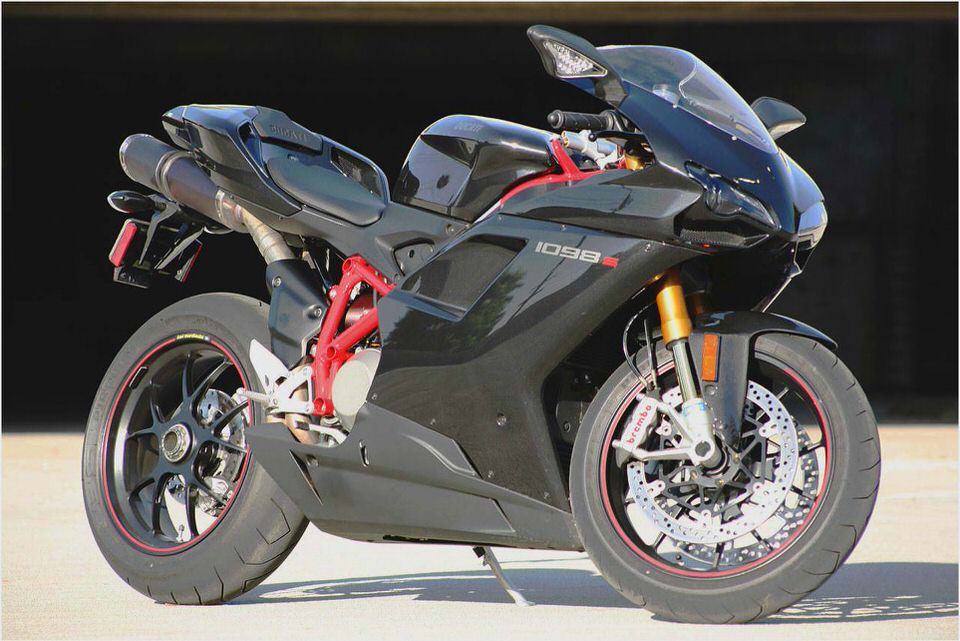
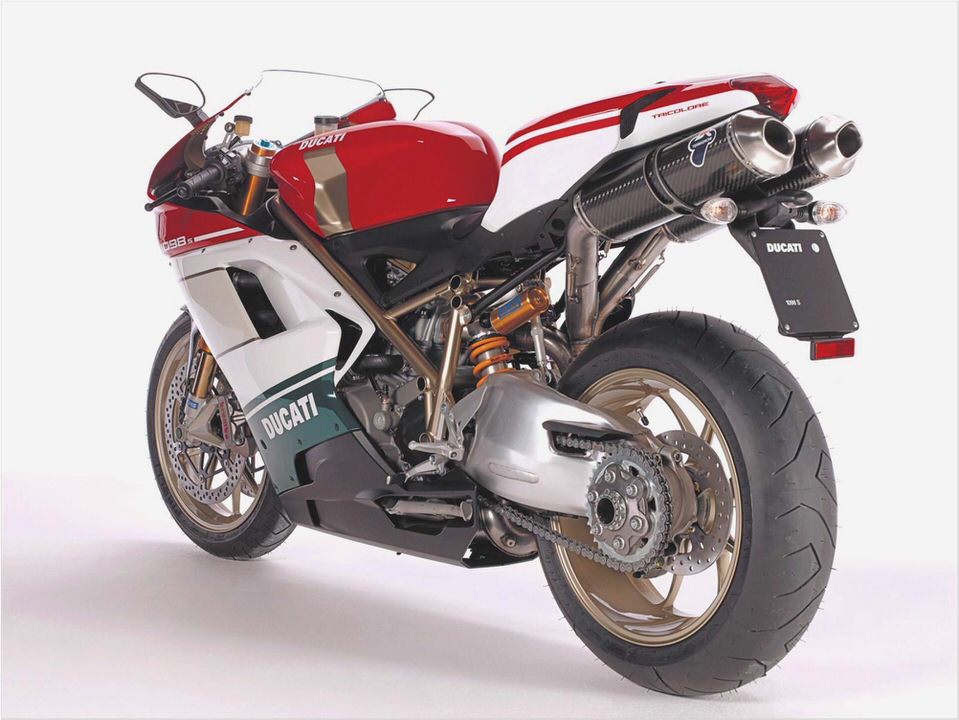
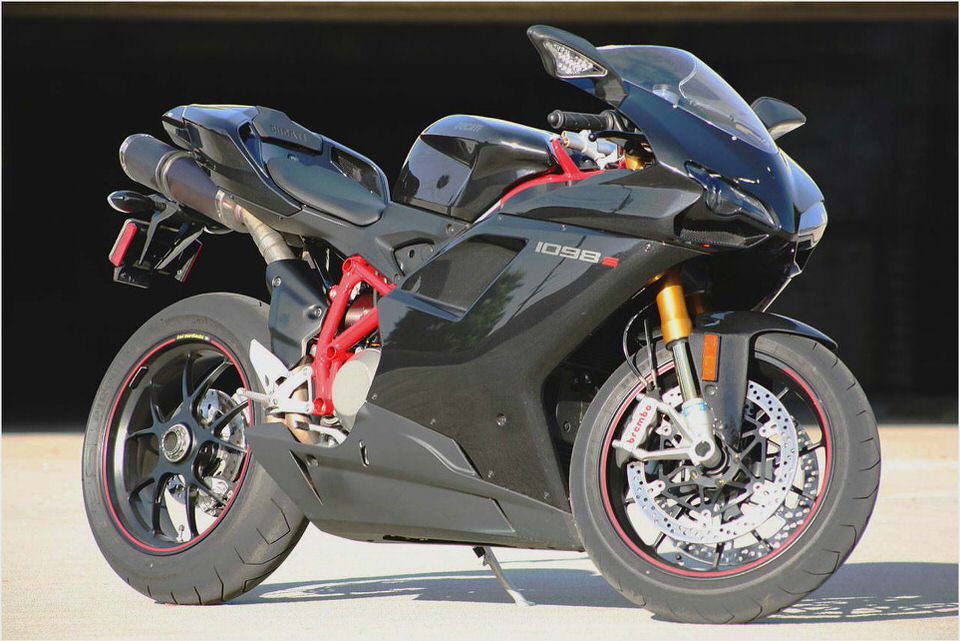
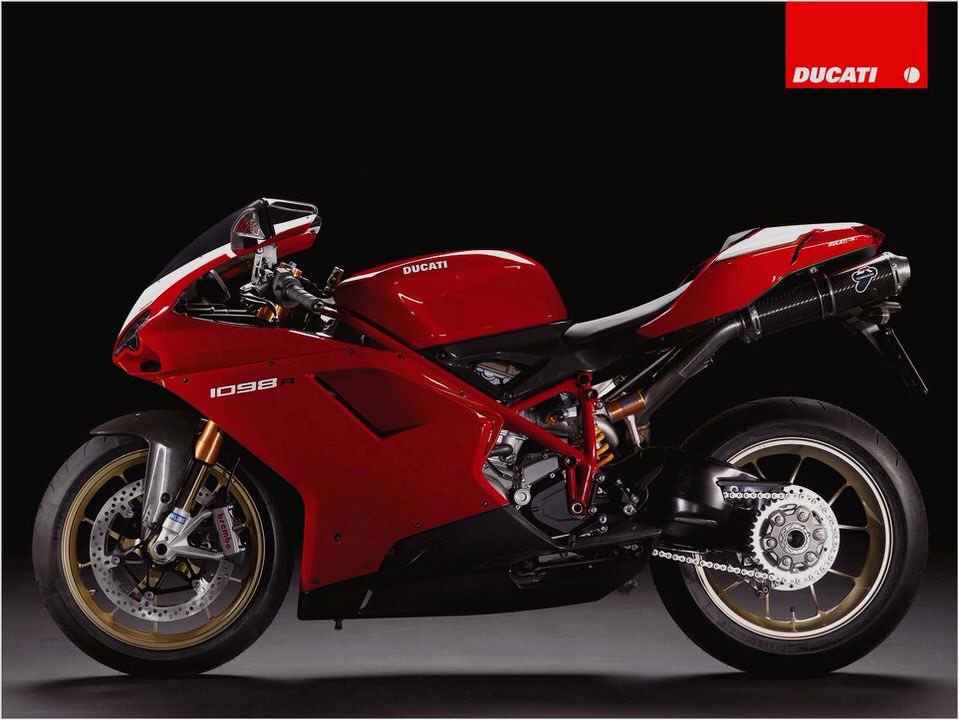
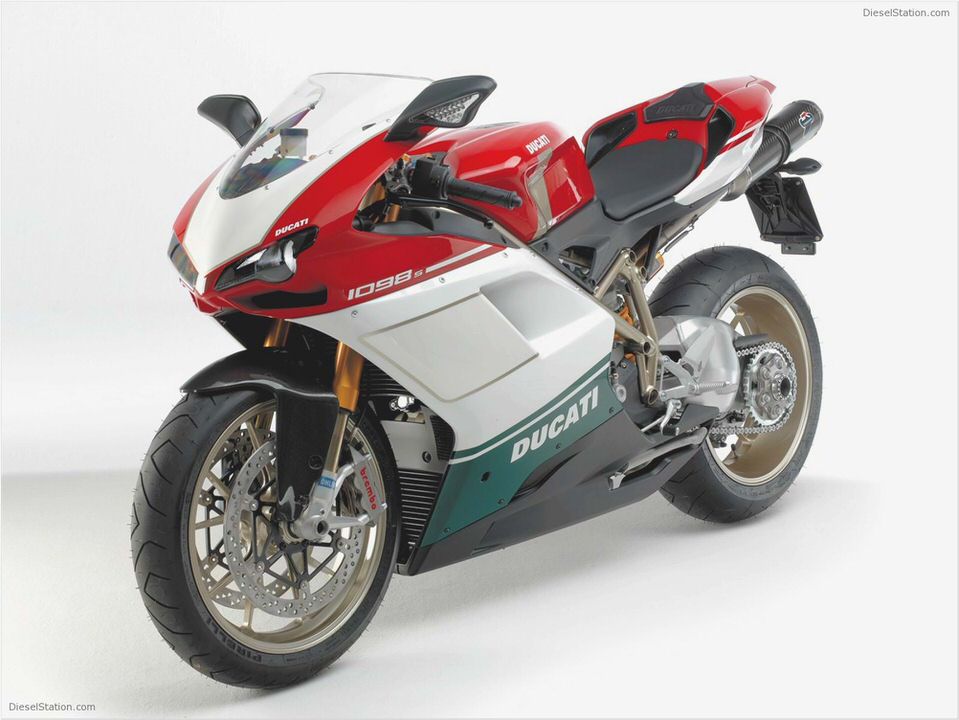
- A Look at the Ducati Superbike Desmosedici RR – Yahoo Voices – voices.yahoo.com
- 2004 Ducati Multistrada 1000DS – Ducati.ms – The Ultimate Ducati Forum
- 2002 Ducati 998 vs. Aprilia Mille R – Motorcycle USA
- 2012 Ducati Panigale 1199 S Tricolore – Used 2012 Panigale 1199S Tricolore…
- RSD Desmo Tracker Roland Sands Design

